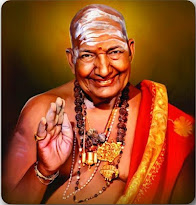Excerpts from The Master on Bhagavad Gita CH15 - Day 2
 |
| H H Swami Tejomayananda |
What is the cause of this samsar?
That which is part of effect cannot be its cause. Hence atoms, elements, etc can only be called immediate causes but not the ultimate cause. If we trace back the cause of even a piece of cloth, we go to seed, earth, water, space and finally existence alone.
If names and forms disappear, Existence alone will remain.
Therefore, if an effect exists, cause must precede and only existence can be the ultimate cause. Hence Sat is root, moolam and as in a family tree this root is above and beyond all.
Krishna paints a metaphor to explain samsar that we experience.
Samsara is like a banyan tree (Ashvatha vriksha) whose roots are above and branches are spread out below.
- Root – Here it refers to the cause. Existence (Sat) alone is the ultimate cause of everything that exists. Samsar exists in time and space limits. Sat, the cause precedes all and is beyond all effects. Hence the root of the tree is said to be Urdvam – Above. Much like the family tree.
- Branches – are spread out going up and down. The gross (manifest worlds) and subtle (the unmanifest thought worlds) are the effects that are many and spread out. Mineral world, plant world, animal world, human world and within this too so many varieties are there.
- Leaves – cover and give beauty to the tree. So too Veda mantras by telling us how to live righteously give beauty to our samsara. If enjoined karma are performed with desires they keep this world going on like leaves that keep the tree alive. And if done without desire, they add beauty to world.
- Nodular buds – nourish the branches and enable growth. Similarly gunas (sattva, rajas, tamas) nourish the samsara. The sense objects entice and prompt actions furthering the growth of samsara tree. According to our gunas we create our own private worlds like we get done our personal rooms to our taste.
- Secondary roots – of a banyan tree are spread, tangled and also firmly rooted. Similarly humans are firmly bound by their habits (repeated desire prompted actions create deep vasana impressions)
- Ashvata – name itself connotes that which may not remain tomorrow. And even if it does, it will not remain the same, like the perennial flow of river. Though constantly changing it is said to be imperishable (avyaya), because, unless knowledge of Paramatma is gained samsara chakra will go on.
- That which can be felled is a tree. By this metaphor Krishna tells us however frightening it may be we can cut it down.
- Karmanubandhini manushyaloke – humans alone have adhikara to karma and hence the freedom/choice to cut down or further grow the samsara tree. By our karmas we go up and down many branches (worlds) in many lives and get further bound.
Veda vid – Vedarthavid is one who knows the Truth of Vedas – One who has purity of mind and clarity of thought and grace of Guru and God alone can thus come to know the true nature of this samsara tree and its root (Sat).
Na rupam asya iva tatha uplabhyate - Yatha varnithamm. A physical tree as described above doesn't exist. It has no start, end or middle existence as such. On a deeper connotation such a samsara itself does not exist. All this duality/multiplicity is only imagined upon the Pure Consciousness. With the sword of asanga (discrimination and dispassion) cut the tree down and wake up to the pure awareness within which is the mulam, the root, the source.


Comments
Post a Comment